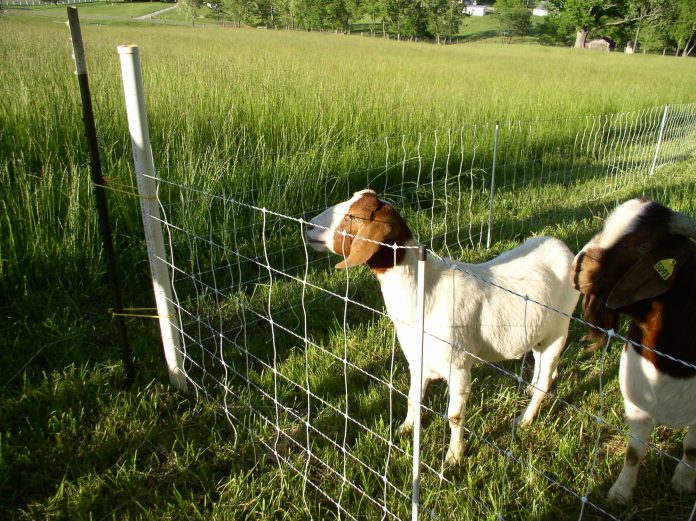Spring is a favorite time of the year for many, with the warmer temperatures arriving after the winter freeze. New life emerges with every passing day. I look out my window and see flowers popping up. The most beautiful sight, here on my ridge, are the spring daffodils that line the sides of the roads and the hillsides.
Alongside those amazing flowers we will also find spring onions. So, while my favorite part of spring is the weather and burst of life around me, my goats only have one thing on their minds and that is eating all the onions.
My husband and I live off a state route and our main priority is keeping our goats fenced in, due to the dangers of the busy road. The first year we had our two goats, they got loose and ended up walking about a mile down the road. Leisurely following where all the onions grew. By the time I got them home, they smelled so strongly of onion, it was nauseating. They were the happiest little creatures after their adventure because sheep and goats are highly tolerable of digesting onions.
Identifying onions
Onion, Allium cepa, is an herbaceous biennial in the plant family of Liliaceae, as well as garlic, shallots, leeks and chives. Onions are grown for their bulbs and can be identified by the flattened disc at the base of the stem. The leaves are hollow and tubular that form a pseudo stem where the sheaths overlap. There are usually anywhere from three to eight leaves per plant.
It is easy to confuse onions with garlic. Identification would be easy once we dug them up because garlic has cloves. But for quick identification one way to tell the difference is to squeeze the stem. You will also be able to smell the difference between onion and garlic.
Anemia
Livestock species have different tolerances to onions. Sheep and goats have the highest tolerance with beef having the lowest. If a beef animal were to digest a high quantity of onions, they would be more susceptible to suffering from beef toxicosis due to the irritating substance found within that creates their distinctive smell.
Colorado is one of the few western states that has a high production of onions as well as sheep. According to Colorado State University Extension, the irritating substance is a toxic principle, the alkaloid N-propyl disulfide. It causes oxidative injury to the hemoglobin and red blood cell membranes. Once this damage has occurred the hemoglobin precipitates into Heinz bodies visible in the red blood cells. Basically, it can cause clinical anemia.
Anemia is not a concern for myself and my goats, due to their only ingesting the leaves and the fact that sheep and goats are more tolerable than beef cattle. Anemia can become more prominent when feeding cull onions and the ingesting of a high quantity of the bulbs.
Nothing to worry about
There may be many dangerous plants located within our pastures, but spring onions would not be classified as one of them. It would take a beef animal ingesting a quarter of their total diet in onions to suffer from anemia.
The warning signs that an animal may be suffering from anemia include pale mucous membranes, higher respiration rate and weakness. Once an animal has gotten to this point the risk of parasitic infestations increase as well.
The only cause for concern in sheep and goats, would be if those animals were providing milk for human consumption. It would not be harmful, but if sure would have a distinct odor and taste.
My two ornery goats are wethers, and I have no plans on expanding our herd currently. For now, I will just deal with their stinky breath and let them live their best lives munching down on all the onions spring has brought us.












